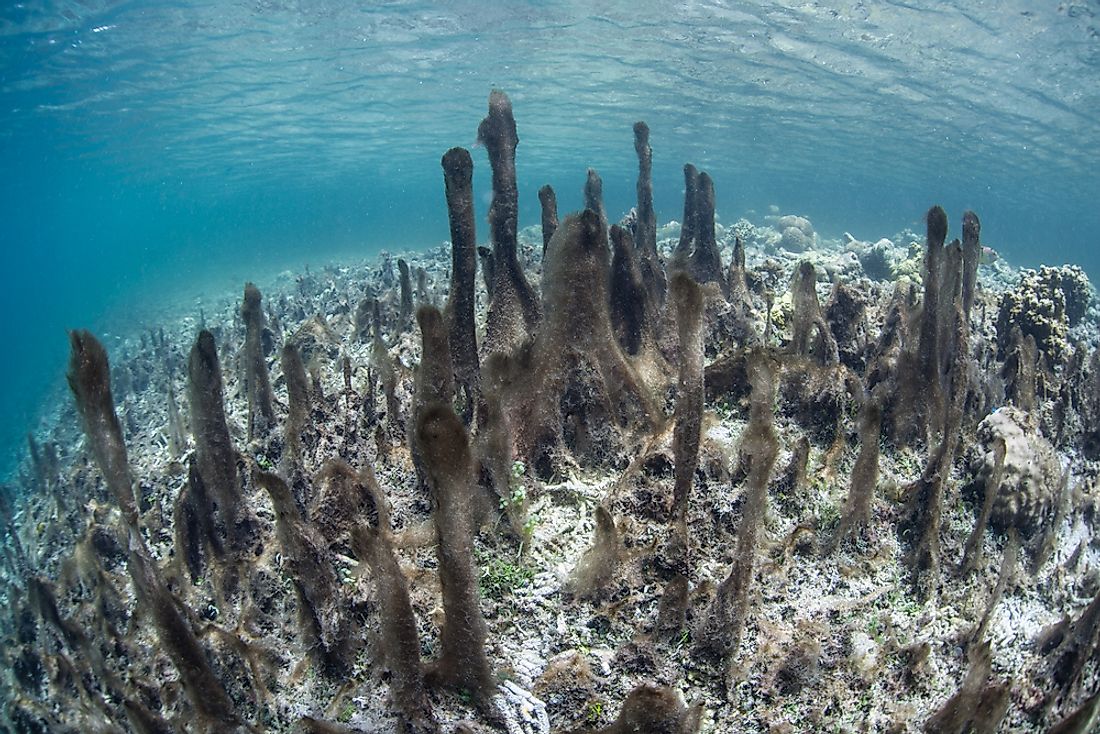Top Reasons for Animal Population Decreases

Wildlife refers to all the plant and animal species that survive in natural, wild areas throughout the world. A delicate balance must exist among all living things in order to sustain healthy ecosystems. Unfortunately, that balance has been thrown off by human involvement. Mammal, bird, reptile, fish, and amphibian populations have declined by 52% during the last 4 decades according to the World Wildlife Fund. The forces behind this unprecedented destruction are many. This article takes a look at some of the major causes of the decline in wildlife.
Major Causes of Wildlife Loss
Humans use plants and animals for nearly every facet of daily life. Food, clothing, medicine, souvenirs, pets, and building supplies are just some of the uses that have led people to rely on wildlife. Humans fulfill these needs by overfishing rivers and oceans, poaching endangered animals, and overhunting important species. Wildlife exploitation is responsible for 37% of the loss in wildlife biodiversity. We are taking more than mother nature can provide.
Human Land Use Competing for Space with Wildlife
In addition, to keep up with unsustainable human population growth, more and more land is required. Cities are expanding at alarming rates and stretching beyond their original borders. Housing developments are infringing upon plant and animal homes by covering the earth with concrete, bulldozing hills to create flat lots of land, and damming rivers and streams to produce hydro-electricity. It’s no wonder that habitat degradation and change have resulted in a 31.4% loss of wildlife. Related to this is complete habitat loss, responsible for 13.4% of wildlife loss. Habitat loss is occurring in an effort to keep up with demands for agriculture which require huge tracts of land to produce feed. This feed is used for animals that are raised for meat on factory farms. To obtain these tracts of land, deforestation practices are utilized. Deforestation tears down trees and large plants, stripping animals of shelter and food.
Pollution
All of this human development produces pollution. Waterways are polluted with runoff from manufacturing facilities, factory farms, and the gas and oil that collects on roadways. Mining practices discard unusable heavy metals and minerals into groundwater sources. Air is polluted by the fumes from traffic and burning fossil fuels. Pesticides sprayed onto crops inadvertently kills other plant species. Garbage and littering fills the land with non-biodegradable plastics that can be consumed by animals both on land and in sea. All of these reasons and more explain why pollution is directly responsible for the loss of 4% of wildlife biodiversity. But, indirectly, it is responsible for more deaths because it causes global climate change. All of those greenhouse gases released into the air not only have a direct impact on the quality of air and water but they go on to trap solar radiation which leads to increased global temperatures, natural disasters, and glacial melting. Global climate change has exterminated 7.1% of all wildlife.
Invasive Species
Human involvement does not stop with these causes. Increased globalization means that people are now traveling farther and faster than ever before taking with them new ideas, business prospects, and finished goods around the world. While this sounds like a positive advancement for civilization, it also comes with negative consequences. This increased mobility has also allowed for the spread of non-native plants and animals to move into new areas. Non-native wildlife is referred to as invasive species and they are responsible for the loss of 5.1% of all wildlife and for threatening 42% of all endangered species. Invasive species move into an area and quickly reproduce and spread. They outnumber native species, preying on them and competing with them for food resources. This decreases the biodiversity thereby changing the structure of the ecosystem.
Disease
Finally, disease among plants and animals is responsible for a 2% loss in biodiversity. Disease is almost an aftermath of the aforementioned causes of wildlife loss because it occurs in unhealthy and unbalanced ecosystems. Although they are naturally occurring, an unhealthy ecosystem cannot fend for itself and fight off virus, fungus, and bacteria in the same way a healthy ecosystem can. Lower levels of biodiversity mean that the plant and animal community is less resilient to disease.
What Can Be Done?
Within urban areas, residents need to be educated and empowered to work at a local level to promote small scale conservation efforts. Business owners need to be held accountable for the environmental degradation that their work may cause and further mandated to reduce and offset this destruction. Policy makers on an international level need to tackle wildlife trade and poaching concerns. National government should focus on converting their nations to renewable energy sources. On an individual level, people need to focus on reducing, reusing, and recycling products. This problem is large, it cannot be fixed by one person. Action is necessary across boundaries and cultures, from the lowest levels of society to the highest. The problem can no longer be ignored.
Major Causes Of Decline In Wildlife Populations Worldwide
| Rank | Cause Of Species Loss | % Of Loss Due To The Cause |
|---|---|---|
| 1 | Exploitation | 37% |
| 2 | Habitat Degradation/Change | 31.4% |
| 3 | Habitat Loss | 13.4% |
| 4 | Climate Change | 7.1% |
| 5 | Invasive Species/Genes | 5.1% |
| 6 | Pollution | 4% |
| 7 | Disease | 2% |







